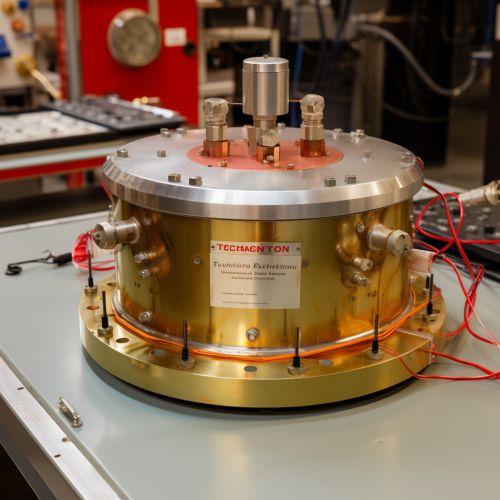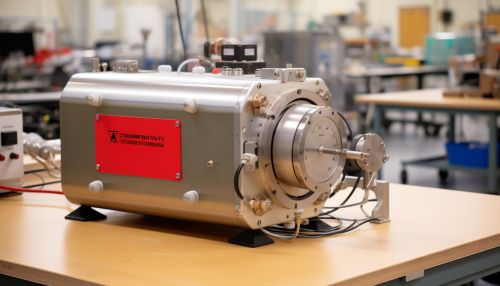Technetium-99m
Introduction
Technetium-99m (Tc-99m) is a metastable nuclear isomer of technetium-99, symbolized as ^99mTc. This isotope is the most commonly used medical radioisotope and is employed as a radioactive tracer in the imaging of different organs and tissues in the body.
Physical and Chemical Properties
^99mTc is a metastable isomer, meaning it is in an excited state and will decay to its ground state, technetium-99 (^99Tc), by emitting gamma radiation. This gamma radiation is what makes ^99mTc useful in medical imaging. The half-life of ^99mTc is approximately 6 hours, which is ideal for many diagnostic imaging procedures as it allows for imaging to be completed in a reasonable time frame while minimizing the patient's radiation exposure.
Chemically, ^99mTc behaves similarly to other technetium isotopes. It can form a variety of chemical compounds, many of which have been developed for use in medical imaging. The most commonly used ^99mTc compound in medicine is technetium-99m pertechnetate (^99mTcO4-), which is used in a variety of imaging procedures.


Production
^99mTc is not naturally occurring and must be produced artificially. The most common method of production is through the decay of molybdenum-99 (^99Mo), which itself is produced in nuclear reactors through the fission of uranium-235 (^235U). The ^99Mo decays to ^99mTc through a process called beta decay, in which a neutron in the ^99Mo nucleus is converted into a proton, an electron, and an electron antineutrino. The resulting ^99mTc is then extracted from the decayed ^99Mo using a device called a technetium-99m generator.
Medical Uses
^99mTc is used in a variety of medical imaging procedures, including single-photon emission computed tomography (SPECT), bone scans, brain scans, heart scans, and many others. The isotope is incorporated into a variety of different compounds, each of which is designed to target a specific organ or tissue in the body. Once administered to the patient, the ^99mTc compound accumulates in the target tissue and emits gamma radiation, which is detected by a gamma camera to create an image of the tissue.
Safety and Risks
While ^99mTc is a radioactive isotope, its use in medical imaging is generally considered safe. The isotope's short half-life and the fact that it emits only gamma radiation (which is less damaging to tissues than other types of radiation) minimize the patient's radiation exposure. However, as with any medical procedure, there are risks associated with the use of ^99mTc, including allergic reactions to the ^99mTc compounds and the potential for radiation-induced damage to tissues.
